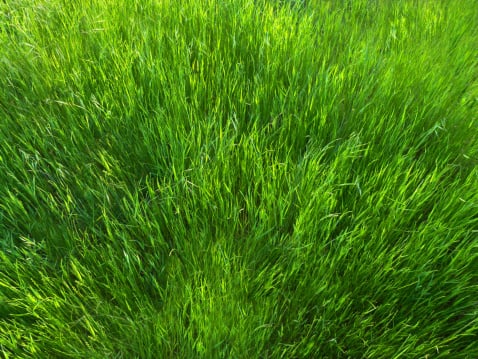You deserve to have a house with a beautiful, vibrant and healthy yard. OrganicLawns provides local lawn fertilization services that transform your yard into a luscious carpet of deep green grass.

Although it’s neither from Kentucky nor blue, Kentucky bluegrass lives up to its reputation as a reliable lawn cover. In the 17th and 18th centuries, homesteaders brought this grass seed from Europe to Kentucky to grow strong pastures for their animals. Farmers named the seed bluegrass for its seed heads that grows at heights of 2 to 3 and that look blue in certain light.
Midwest and northeast homeowners still love this seed because it’s perfect for lawns that need cool-season grass. Often compared to tall fescue, Kentucky grass can thrive in cool winters and warm summers. Maryland residents enjoy bright, hydrated lawns all year with Kentucky bluegrass seed.
As one of the most cold-hardy lawn grasses in the country, bluegrass is a favorite for areas in Maryland that get both northern and southern weather. At OrganicLawns, we’ll help you get started with a Kentucky bluegrass sod. Here are a few things to know from our expert team before you decide.
Kentucky bluegrass is easy to find on many American lawns. This seed grows in Climate Zones 1, 3, 4, 5, 6, 7 and 8, so Maryland residents are no stranger to this type of grass.
This lawngrass is an excellent option for many homes, and we want to give you the information to get started. Here are a few Kentucky bluegrass characteristics to keep in mind:
Kentucky bluegrass is similar to turf-type tall fescue, another popular cool-season grass. The differences between these seeds may determine which option you prefer, so here are three pros and cons of bluegrass vs. fescue.
While bluegrass and fescue can grow in the same zones, their unique characteristics may make your decision easier. Sometimes homeowners will use a grass seed blend if they want fescue’s heat tolerance and bluegrass’s cold-hardiness.
At OrganicLawns, we want to help you grow and maintain the best yard possible. When we arrive for a service estimate, we test your soil’s pH and work with you to choose a zero-weed seed that will complement your home.
With eco-friendly and pet-friendly materials, we support your property’s needs and make your lawn a space everyone can enjoy. You can also use pay-as-you-go services and request free quality control visits when you partner with us.
To begin your Kentucky bluegrass project, you can schedule a free estimate online or call our expert team at (410) 995-9722.